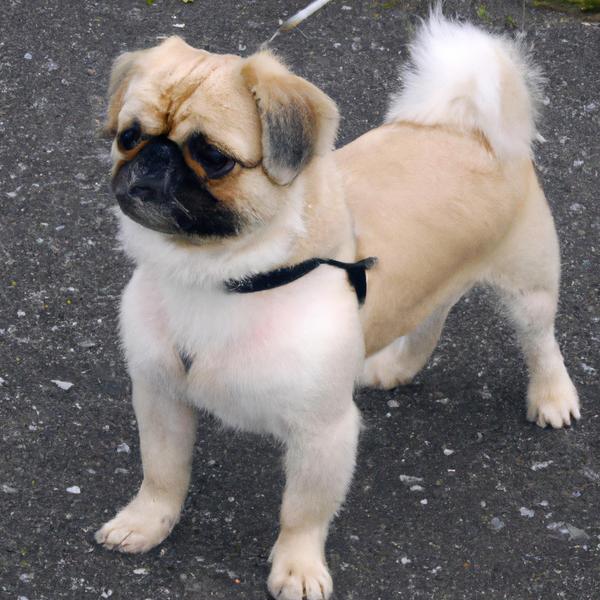Pug-Coton vs. Labrabull: Breed Differences and Similarities
Hypoallergenic
Are Pug-Cotons or Labrabulls hypoallergenic, or neither?
Unfortunately, neither Pug-Coton nor Labrabull are hypoallergenic, which may not make them the best choice for dog lovers who suffer from pet allergies.
Temperament
What are the personalities of Pug-Coton and Labrabull dogs?
Playful
Courageous
Intelligent
Friendly
Affectionate
Loyal
Lively
Gentle
Going
Trainable
Cheerful
Vocal
Energetic
Loyal
Alert
Protective
Eager
Smart
Shedding Level
Do Pug-Cotons shed more than Labrabulls, or which breed sheds more, Pug-Cotons or Labrabulls?
Pug-Cotons are moderate shedders, but regular brushing can reduce shedding and maintain coat health.
Labrabulls shed a lot of hair each year, so frequent brushing is essential for reducing shedding and maintaining coat health.
Watchdog Ability
Which dog breed makes a better watchdog, the Pug-Coton or Labrabull?
Pug-Cotons are decent watchdogs - they'll alert their owner if something seems amiss.
Choose a Labrabull if you want a top-notch watchdog. This breed takes guarding seriously, and may not require much training, though obedience or guard dog training can improve their skills.
Ancestry
What are the origins of Pug-Coton and Labrabull breeds?
Coton de Tulear and Pug
American Pit Bull Terrier and Labrador Retriever
Breed recognition
Which kennel clubs recognize/register Pug-Coton and Labrabull?
ACHC = American Canine Hybrid Club
DDKC = Designer Dogs Kennel Club
DRA = Dog Registry of America, Inc.
Dog Registry of America Inc.
American Canine Hybrid Club
International Designer Canine Registry
Date of Birth
When were Pug-Coton and Labrabull breeds first developed?
Unknown
Eye Color Possibilites
What are the eye colors of Pug-Coton and Labrabull dogs?
Hazel
Brown
Hazel
Brown
Nose Color Possibilites
What are the natural nose colors of Pug-Coton and Labrabull?
Black
Black
Brown
Coat Color Possibilites
What are the natural colors of the coat for Pug-Coton and Labrabull breeds?
Cream
Black
Gray
White
Pied
Black
Gray
Brown
Cream
Brindle
Fawn
Silver
Coat Length
What is the typical coat length for Pug-Coton and Labrabull breeds?
Pug-Cotons have longer coats compared to most dogs.
Labrabulls have short coats.
Coat Density
What is the density of the coat of Pug-Coton and Labrabull?
Coat Texture
What is the hair texture of Pug-Coton and Labrabull?
Wavy
Straight
Litter Size
What is the usual litter size for Pug-Coton and Labrabull?
A Pug-Coton can have a litter of 4-6 puppies on average. However, it's worth noting that the size of the litters can vary greatly. Factors that can influence litter size include the health of the mother, breeding history, and genetics.
A Labrabull can have a litter of 10-14 puppies on average. However, it's worth noting that the size of the litters can vary greatly. Factors that can influence litter size include the health of the mother, breeding history, and genetics.
Adaptability
Pug-Cotons are highly adaptable and versatile, making them excellent companions for families and individuals of all lifestyles.
Labrabulls have average adaptability to changes in lifestyle and living environments compared to other breeds.
Health Issues
Between Pug-Coton and Labrabull, which breed is more prone to health problems?
Pug-Cotons typically have low vet costs due to their good health, but it's important to monitor their health and seek vet care when necessary.
While the Labrabull breed is generally healthy, occasional vet check-ups are still necessary to address any health concerns.
Major Concerns
What are the major health concerns for Pug-Coton and Labrabull breeds?
Patellar Luxation
Demodectic Mange
Hip Dysplasia
Epilepsy
Hemivertebrae
Corneal Ulcer
Pug Dog Encephalitis
Legg-Calve Perthes Disease
Progressive Retinal Atrophy (PRA)
OCD
Epilepsy
Bloat
Hypothyroidism
Minor Concerns
What minor health issues should be kept in mind when owning Pug-Coton and Labrabull?
Allergies
Dry Eye
Allergies
Hip And Elbow Dysplasia
Acute Moist Dermatitis
Occasional Tests
What occasional tests are recommended for Pug-Coton and Labrabull breeds?
Full Body Physical Examination
Hip
Elbow
X-Rays
Ear Examination
Full Body Physical Examination
Energy
How do the energy levels of Pug-Cotons and Labrabulls compare?
Pug-Cotons are suitable for those with a balanced lifestyle as they have an average energy level.
Labrabulls thrive on an active lifestyle due to their high-energy nature.
Social Needs
Pug-Coton vs Labrabull social needs comparison
Pug-Coton and Labrabull have very high social needs. These needs include regular mental and physical stimulation, a job or purpose, and companionship. They thrive in environments where they have a lot of interaction with humans and other dogs.
Exercise Needed
Pug-Coton vs Labrabull exercise need comparison.
The Pug-Coton and Labrabull breeds need significant physical activity to maintain a healthy lifestyle. They are well-suited for those who lead an active lifestyle and enjoy activities such as running, hiking, or other outdoor pursuits.
Sleeping Need
Which of the two sleeps the most/least: Pug-Coton or Labrabull?
Pug-Cotons have moderate energy levels and typical sleep patterns of 12-14 hours per day.
Labrabulls are active and require sufficient sleep to stay healthy.
Tendency to Bark
Do Pug-Cotons or Labrabulls bark more/less frequently?
Pug-Coton and Labrabulls tend to bark moderately, they bark when necessary, such as to alert their owner or to communicate something. They may also bark due to certain triggers like fear, alarm, boredom, greeting, separation anxiety and compulsive barking.
Mouthiness
Mouthiness Comparison: Pug-Coton vs Labrabull?
Roaming urge
Pug-Coton vs Labrador: Running away tendency?
Prey Drive
Pug-Coton or Labrabull - which breed has a higher level of prey drive?
Activity Level
Which breed has higher energy, Pug-Cotons or Labrabulls?
Pug-Cotons are low-energy dogs. This breed make a great companion for a relatively inactive person. Pug-Coton dogs require a few short daily walks, and then they're happy snuggling next to you for the rest of the day.
Labrabulls are high-energy dogs. They need mental as well as physical exercise. These dogs require a lot of your involvement and without it they can, and will, become problematic dogs.
Tolerance of being left alone
Walks per Week
How many miles should Pug-Coton or Labrabull walk each week?
There's really no limit to how far you walk your dog as long as they're comfortable. For Pug-Coton, it's at least 4 miles / week. Just remember to build distance and stamina gradually over time.
There's really no limit to how far you walk your dog as long as they're comfortable. For Labrabull, it's at least 10 miles / week. Just remember to build distance and stamina gradually over time.
Activity per Day
Do Pug-Cotons or Labrabulls require more exercise?
In general most Pug-Cotons usually need at least 30 minutes of exercise daily. This can be spread across the day and include all sorts of high-energy activities, like walking, running and playing.
In general most Labrabulls usually need at least 60 minutes of exercise daily. This can be spread across the day and include all sorts of high-energy activities, like walking, running and playing.
Grooming
Which breed is easier to maintain in terms of grooming, Pug-Cotons or Labrabulls?
The Pug-Coton requires an average amount of grooming compared to other breeds.
The Labrabull is a low-maintenance breed that doesn't require much grooming.
Brushing Frequency
What is the recommended brushing frequency for Pug-Coton and Labrabull dogs?
Ideally, Pug-Coton should be brushed at least 2 or 3 times a week (preferably daily) improve shedding.
Labrabull should be brushed at least once a week. Of course you can give them more frequent brushes if you find that they are still shedding a lot
Brushing Tools
What brushing tools are used for Pug-Cotons and Labrabulls?
Pin Brush
Comb
Scissors
Clipper
Pin Brush
Deshedder
Clipper
Nail Clipper
Cups
How much food should be given to Pug-Coton or Labrabull in cups?
For an average 12-14 pound (5 - 6 kg) Pug-Coton feed 1 cups daily. But, keep in mind, the amount you feed is going to be dependent on the quality of the food you are feeding.
For an average 75-90 pound (34 - 41 kg) Labrabull feed 3 cups daily. But, keep in mind, the amount you feed is going to be dependent on the quality of the food you are feeding.
Daily Cost
Which breed has a higher daily cost, Pug-Coton or Labrabull?
The average cost of a Pug-Coton is somewhere $1.40 - $1.40 per day.
The average cost of a Labrabull is somewhere $2.10 - $2.70 per day.
Monthly Cost
Which breed has a higher monthly cost, Pug-Coton or Labrabull?
The average per month expenses of a Pug-Coton is between $35 - $42. This makes an average of $420 - $504 per year. It will be on the higher side when the dog is still small because it will need more frequent visits to the vet, shots.
The average per month expenses of a Labrabull is between $55 - $73. This makes an average of $660 - $876 per year. It will be on the higher side when the dog is still small because it will need more frequent visits to the vet, shots.
Intelligence
Comparing Intelligence: Pug-Cotons vs Labrabulls
Pug-Cotons are average in obedience intelligence but have a high IQ and may cause trouble if left unsupervised.
Labrabull is a very intelligent and trainable breed.
Sensitivity Level
How do Pug-Coton and Labrabull compare in sensitivity?
These breeds are more sensitive than others and easily overwhelmed by new surroundings and people. Pug-Coton and Labrabull need gentle handling and a calm, stable home environment with positive reinforcement training.
Affection Dependance
Which is the more affectionate dog breed: Pug-Coton vs Labrabull?
Apartment Friendly
Which breed is more apartment-friendly: Pug-Coton or Labrabull?
Pug-Cotons make excellent apartment dogs, being fairly active indoors and not requiring a yard.
Labrabulls can do well in apartments with enough exercise and time outside, but a small yard would be ideal.
Child Friendly
Do Pug-Cotons or Labrabulls have a friendlier temperament towards children?
Pug-Cotons are good with kids if socialized and trained from a young age.
Labrabulls make excellent family pets for kids due to their gentle, protective nature and calm temperament.
Senior-friendly
Which dog is more suitable as a pet for the elderly - Pug-Coton or Labrabull?
Cat Friendly
Do Pug-Coton or Labrabull breeds have a better compatibility with cats?
Pug-Cotons are very friendly with cats and make great companions for them.
Labrabulls are not cat friendly.
Dog Friendly
Which breed is more sociable with other dogs: Pug-Coton or Labrabull?
Pug-Cotons are generally very friendly towards other dogs, with a happy and affectionate temperament.
Labrabulls are less friendly towards other dogs, but can improve with socialization.
Pet friendly
How do Pug-Coton or Labrabull dogs interact with other pets?
Stranger Friendly
Which breed is more friendly with strangers: Pug-Coton or Labrabull?
Pug-Cotons are highly friendly around strangers.
Labrabulls are friendly but may bark at strangers, and training is easy due to their intelligence.
Playfulness
Which breed is more playful between Pug-Coton and Labrabull?
Pug-Cotons are a playful breed that needs daily playtime to be happy.
Labrabulls are very playful, so adopting an older one might be a better option for a more relaxed experience.
Trainability
How do the trainability levels of Pug-Cotons and Labrabulls compare?
Pug-Cotons are usually easy to train but require consistency to fully obey commands.
Labrabulls are popular for their ease of training and quick learning ability.
Compare Pug-Coton with other breeds
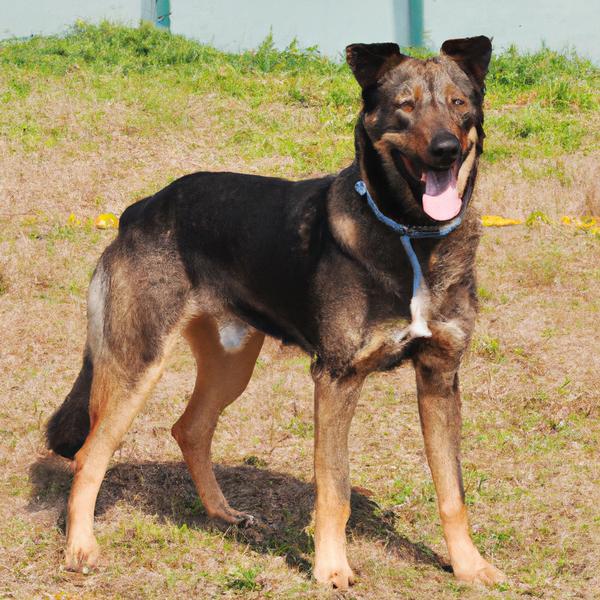
Cattle Shepherd
Pug-Coton vs Cattle Shepherd
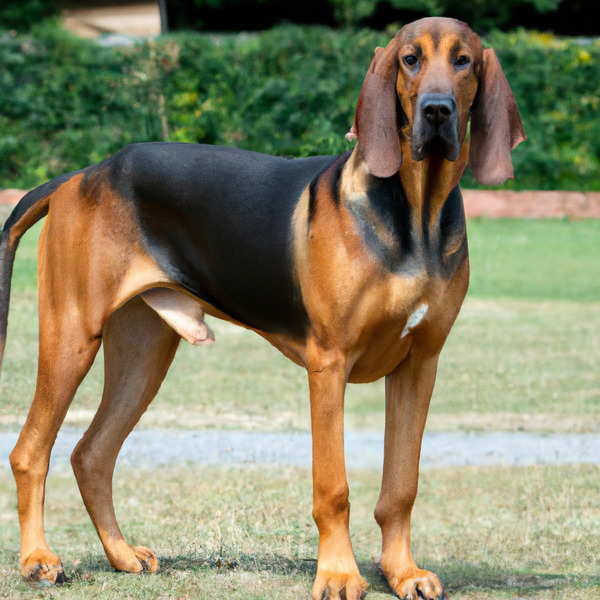
Hanover Hound
Pug-Coton vs Hanover Hound
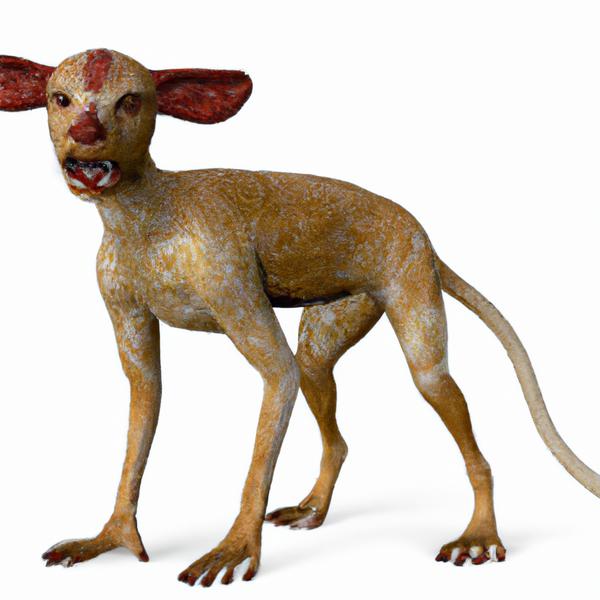
King Rat
Pug-Coton vs King Rat
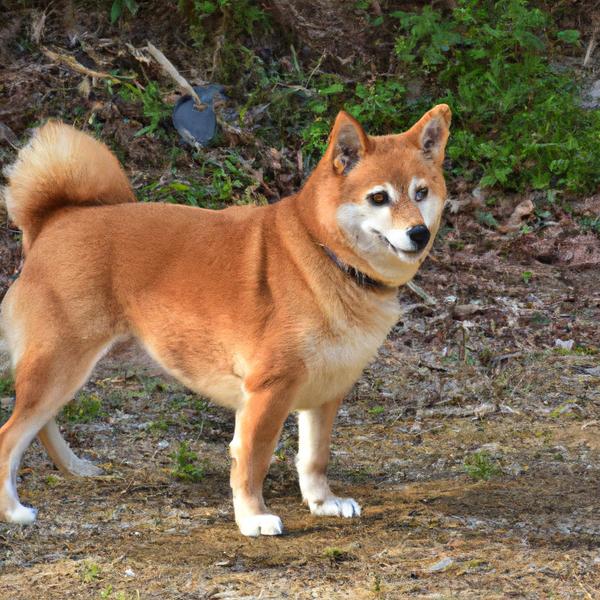
Imo-Inu
Pug-Coton vs Imo-Inu
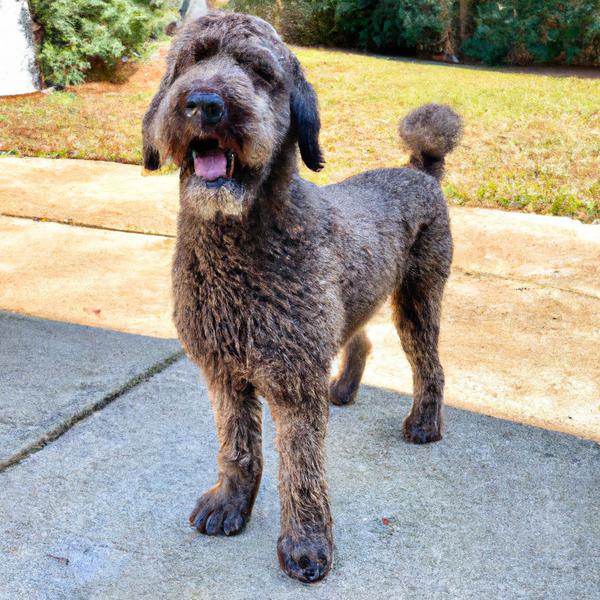
Belgian Shepadoodle
Pug-Coton vs Belgian Shepadoodle
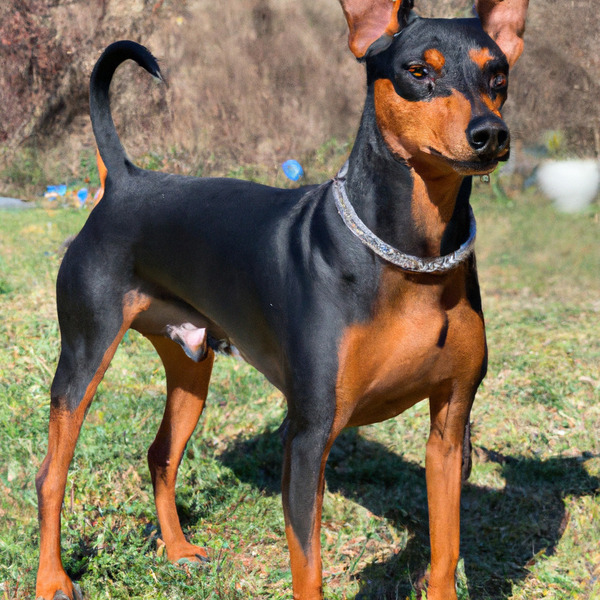
Austrian Pinscher
Pug-Coton vs Austrian Pinscher
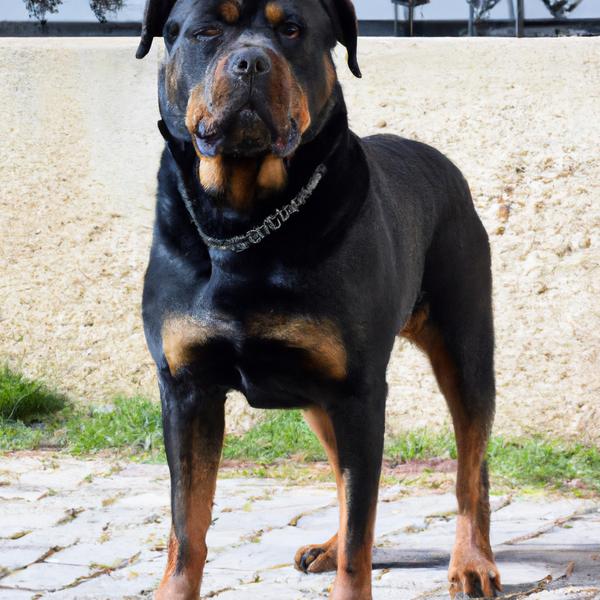
Bull Mastweiler
Pug-Coton vs Bull Mastweiler
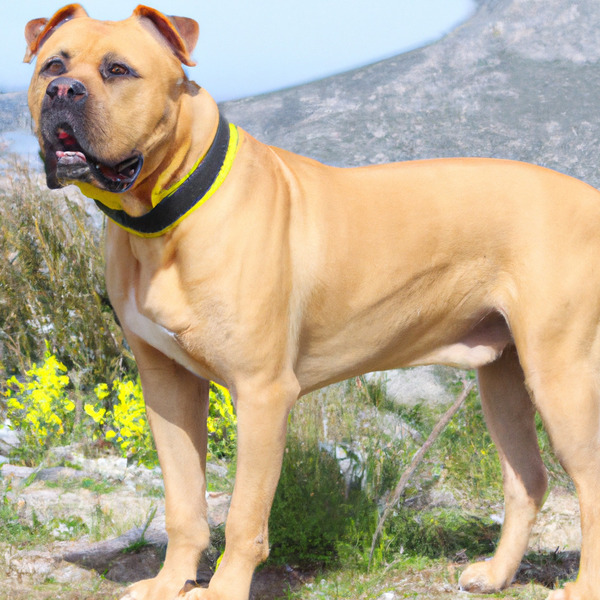
Perro De Presa Canario
Pug-Coton vs Perro De Presa Canario
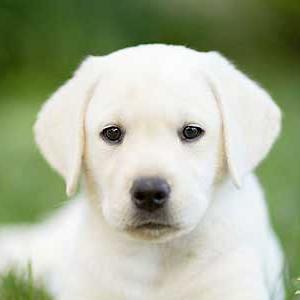
Labrador Retriever
Pug-Coton vs Labrador Retriever
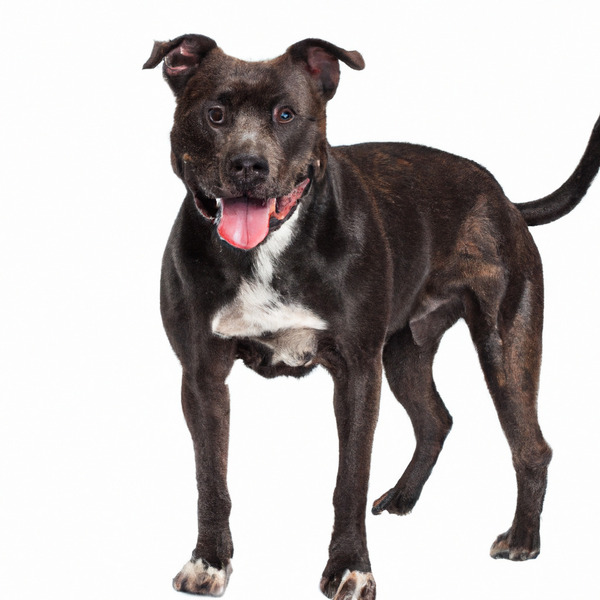
Labrabull
Pug-Coton vs Labrabull
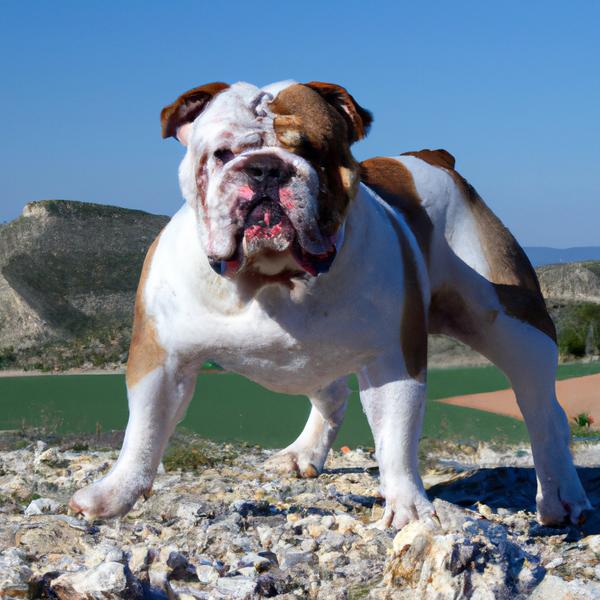
Mountain Bulldog
Pug-Coton vs Mountain Bulldog
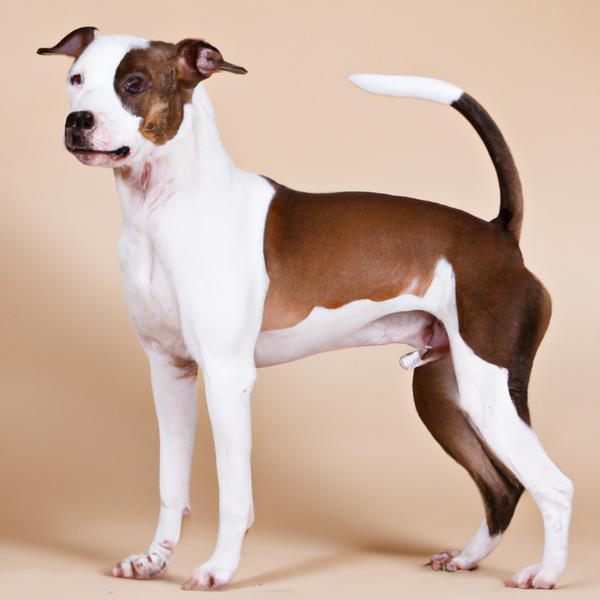
Boxapoint
Pug-Coton vs Boxapoint
